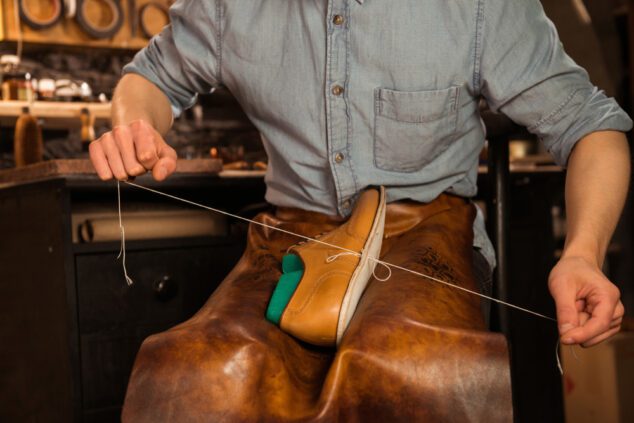Introduction
Agra is not just the home of the Taj Mahal. It is also one of the biggest footwear manufacturing hubs in India. Over the years, the city has become a global sourcing destination for shoes because of its skilled artisans, affordable labor, advanced factories, and access to premium leather.
Today, shoe factories in Agra supply millions of pairs each year to both Indian and international markets. From handcrafted leather shoes to bulk exports, the city offers unmatched versatility.
This article explores why international brands trust shoe factories in Agra and how the industry is preparing for the future.
Agra’s Rich Legacy in Shoemaking
Shoemaking in Agra dates back centuries. During the Mughal era, artisans created premium leather footwear admired for its craftsmanship and durability.
Generations later, the tradition continues. Thousands of shoe factories in Agra now produce footwear for both domestic and global markets. What makes the city unique is the fusion of heritage and modern manufacturing.
While advanced machines handle bulk production, artisans still preserve handcrafting techniques such as embossing, stitching, and fine detailing. This balance attracts international brands that want both scale and premium quality.
Access to High-Quality Leather and Raw Materials
One of Agra’s biggest strengths is access to leather and raw materials. India is among the world’s top leather producers, and Agra benefits from this ecosystem.
Factories source full-grain, top-grain, suede, nubuck, and synthetic leather directly from local tanneries. Reliable suppliers ensure consistent quality for exports.
In addition to leather, Agra has a strong supply chain for soles, adhesives, and accessories. Since most inputs are available locally, production is cost-effective. This makes shoe factories in Agra highly competitive for international buyers.
Skilled Workforce and Artisanal Expertise
Another reason brands choose Agra is its skilled workforce. Shoemaking has been passed down for generations, creating a pool of expert artisans.
These craftsmen specialize in cutting, stitching, finishing, and detailing. Their skills make Agra a hub not only for bulk orders but also for handcrafted luxury footwear.
By combining artisanal expertise with machine precision, shoe factories in Agra deliver products that meet global quality standards.
Cost-Effective Production with Quality Assurance
Cost plays a key role in sourcing decisions. Agra offers a major advantage here.
Labor costs in India are lower compared to Europe and the USA. This allows brands to save money without sacrificing quality. Factories in Agra follow strict quality checks during every stage of production.
Dedicated QA teams inspect raw materials, monitor processes, and test finished products before shipment. As a result, shoe factories in Agra deliver affordable yet world-class footwear.
Advanced Manufacturing Facilities
Agra has modernized rapidly. Many factories now use:
-
Laser cutting
-
Computerized pattern making
-
Injection molding
-
3D printing
These technologies improve efficiency and ensure uniform results.
With this combination of modern machinery and skilled labor, shoe factories in Agra produce everything from formal leather shoes to sports sneakers and safety boots.
Supply Chain Strength and Bulk Orders
Agra’s strategic location makes it a strong export hub. Proximity to Delhi ensures smooth connectivity to airports, highways, and seaports.
Factories here can handle bulk orders for global brands within strict timelines. This ability to deliver large volumes without delays is a key reason why international buyers rely on Agra.
Compliance and Ethical Manufacturing
Global brands demand ethical and sustainable suppliers. Many shoe factories in Agra have obtained certifications such as ISO, BSCI, and SA8000.
Several manufacturers are also adopting eco-friendly practices like sustainable leather sourcing, waste reduction, and renewable energy. This commitment to compliance makes Agra more attractive to global buyers.
Customization and Private Label Options
Customization is another strength of Agra. International brands often look for private label manufacturers who can design exclusive collections.
From luxury hand-stitched shoes to bulk sports footwear, shoe factories in Agra provide tailored manufacturing solutions. This flexibility helps global companies expand their product range without setting up their own plants.
Future of Shoe Factories in Agra
The future looks promising. Key trends include:
-
Government support through Make in India initiatives.
-
Adoption of automation and AI for design and manufacturing.
-
Greater focus on eco-friendly practices.
-
Rising demand for premium leather and sustainable shoes.
With these advancements, shoe factories in Agra are expected to grow stronger as global sourcing hubs.
Conclusion
Agra has firmly established itself as a global footwear hub. Its skilled artisans, premium leather, cost efficiency, advanced facilities, and ethical practices make it the top choice for international brands.
To recap:
-
Shoe factories in Agra combine tradition with technology.
-
They offer high-quality footwear at competitive costs.
-
The city supports both bulk production and luxury customization.
As global demand for sustainable, premium footwear increases, shoe factories in Agra will continue to play a key role in the international supply chain.
FAQs About Shoe Factories in Agra
1. Why is Agra famous for shoe manufacturing?
Agra is known for its leather craftsmanship, skilled artisans, and large-scale production.
2. Do international brands source shoes from Agra?
Yes, many global brands source both luxury and bulk footwear from Agra’s factories.
3. What types of shoes are made in Agra?
Agra produces leather formals, sports sneakers, safety shoes, fashion footwear, and ethnic shoes.
4. Are shoe factories in Agra suitable for startups?
Yes, the city has both small workshops and large exporters, making it ideal for new businesses.
5. Do factories in Agra follow international standards?
Yes, many are ISO, BSCI, and SA8000 certified, with a focus on sustainability.



